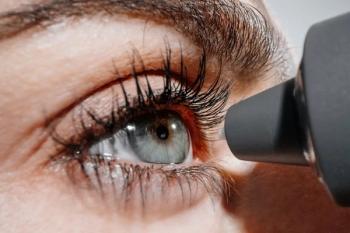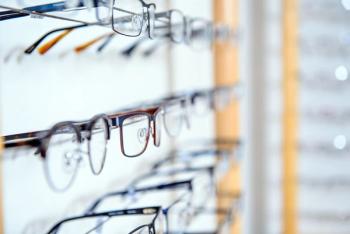
Atropine during childhood associated with thicker choroid during adulthood, study finds
Increased choroidal thickness also was seen in children treated with 1% atropine for 1 week or 0.01% atropine for less than 8 weeks.
A new study suggested that exposure to atropine during childhood results in a thicker choroid in adulthood. Specifically, treatment with atropine for between 2 to 4 years during childhood was associated with increased choroidal thickness of 20 to 40 μm in adulthood 10 to 20 years later, after adjusting for age, sex, and axial length,1 reported first author Yong Li, MD, who is from the Singapore Eye Research Institute, Singapore National Eye Centre, Singapore, Singapore, and Duke-NUS Medical School, National University of Singapore, Singapore, Singapore.
Currently, the long-term effects of atropine have not been established definitively with any treatment of myopia. Dr. Li and colleagues explained that choroidal thickening was observed after orthokeratology treatment,2 with this short-term increase exhibiting a negative correlation with axial elongation.3 Increased choroidal thickness also was seen in children treated with 1% atropine for 1 week4 or 0.01% atropine for less than 8 weeks.5,6 In contrast, another study reported that while 1% atropine increased the choroidal thickness, 0.01% atropine decreased the choroidal thickness after 6 months of treatment.7
“Despite these findings, the long-term effects and downstream implications of these choroidal changes, particularly in adults who received childhood atropine treatment, have not been extensively studied,” the investigators said.
They conducted a prospective observational study to describe the choroidal thickness profiles using sequential deep learning-enabled segmentation in adults who were treated with atropine for myopia control during childhood.
Effects of atropine
A total of 422 eyes were included in the study, of which 94 had not been treated previously with atropine and 328 had been treated with topical atropine during childhood.
“After adjusting for age, sex, and axial length, childhood atropine exposure was associated with a thicker choroid by 32.1 μm (95% confidence interval [CI], 9.2–55.0; P = 0.006) in the inner inferior, 23.5 μm (95% CI, 1.9–45.1; P = 0.03) in the outer inferior, 21.8 μm (95% CI, 0.76–42.9; P = 0.04) in the inner nasal, and 21.8 μm (95% CI, 2.6–41.0; P = 0.03) in the outer nasal. Multivariable analysis, adjusted for age, sex, atropine use, and axial length, showed an independent association between central subfield choroidal thickness and the incidence of tessellated fundus (P < 0.001; odds ratio, 0.97; 95% CI, 0.96–0.98),” Dr. Li and colleagues reported.
They concluded that “…2–4 years of atropine exposure during childhood was associated with a relatively thicker choroid—by 20–40 μm in certain sectors—10–20 years after treatment compared to placebo, after adjusting for age, sex, and axial length.”
They also noted that the increased choroidal thickness was correlated with a reduced incidence of tessellated fundus in early adulthood. They pointed out that it is unclear whether this association indicates a causal relationship or is influenced by confounding factors. However, they believe that the results support the potential long-term benefits of topical atropine eye drops to treat childhood myopia.
References:
Li Y, Wong D, Sring S, et al. Effect of childhood atropine treatment on adult choroidal thickness using sequential deep learning-enabled segmentation. Asia Pac J Ophthalmol. 2024;13;
https://doi.org/10.1016/j.apjo.2024.100107 Li Z, Cui D, Hu Y, et al. Choroidal thickness and axial length changes in myopic children treated with orthokeratology. Cont Lens Anterior Eye. 2017;40:417-423.
Li Z, Hu Y, Cui D, et al. Change in subfoveal choroidal thickness secondary to orthokeratology and its cessation: a predictor for the change in axial length. Acta Ophthalmol. 2019;97:e454-e459
Zhang Z, Zhou Y, Xie Z, et al. The effect of topical atropine on the choroidal thickness of healthy children. Sci Rep. 2016;6: 34936.
Zhao W, Li Z, Hu Y, et al. Short-term effects of atropine combined with orthokeratology (ACO) on choroidal thickness. Cont Lens Anterior Eye. 2021;44:101348.
Li W, Jiang R, Zhu Y, et al. Effect of 0.01% atropine eye drops on choroidal thickness in myopic children. J Fr Ophtalmol. 2020;43:862-868.
Ye L, Shi Y, Yin Y, et al. Effects of atropine treatment on choroidal thickness in myopic children. Invest Ophthalmol Vis Sci. 2020;61:15.
Newsletter
Want more insights like this? Subscribe to Optometry Times and get clinical pearls and practice tips delivered straight to your inbox.



















































.png)


